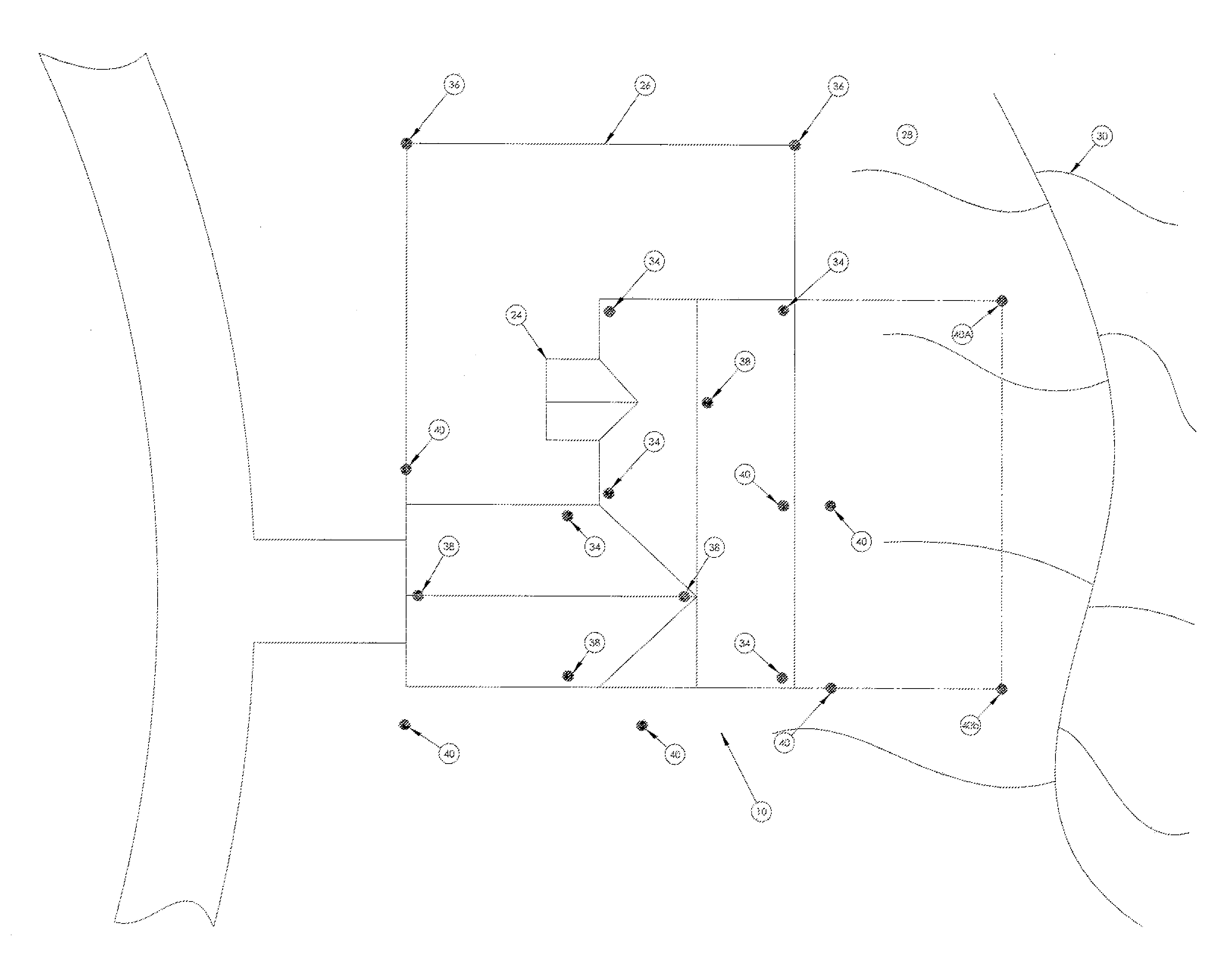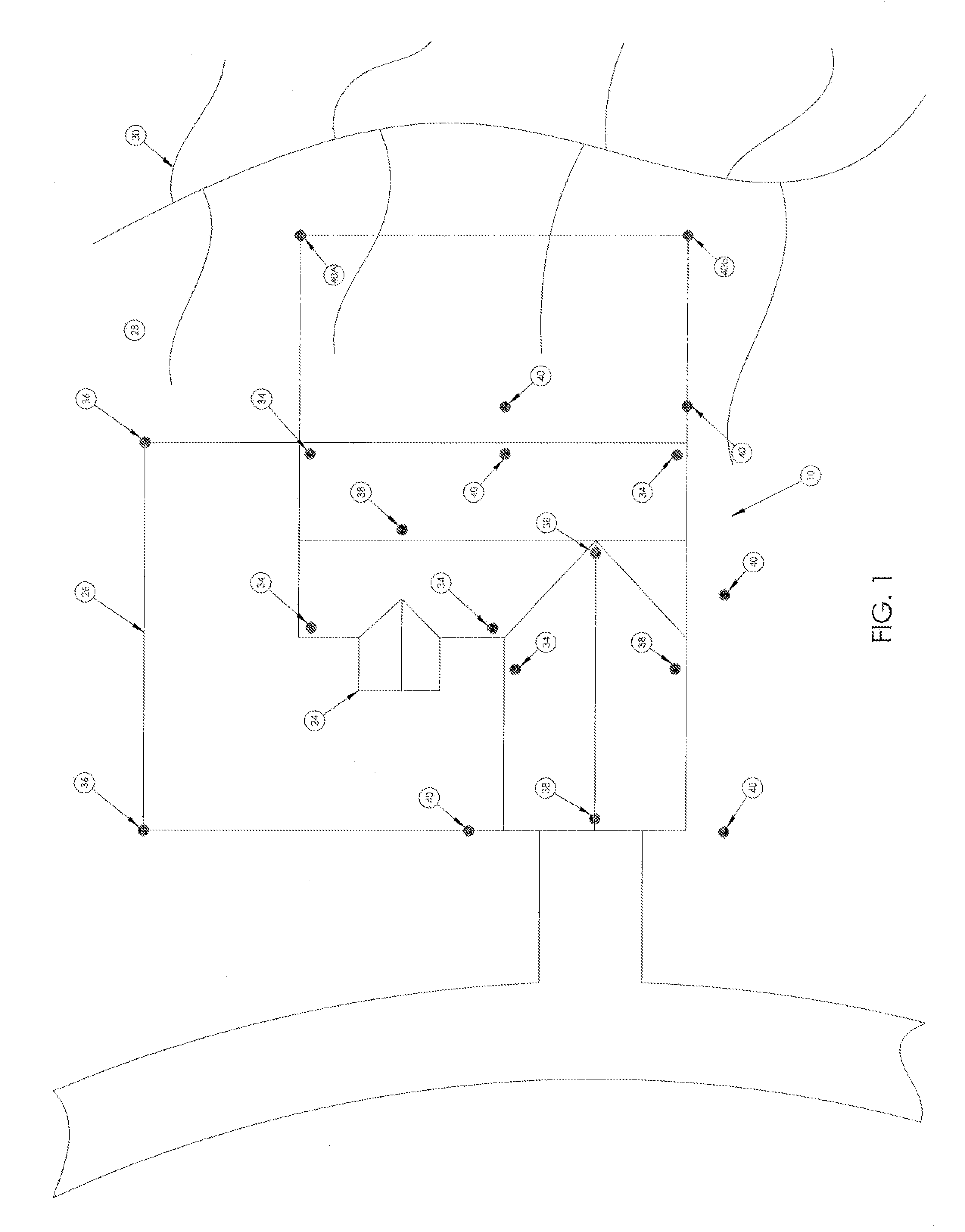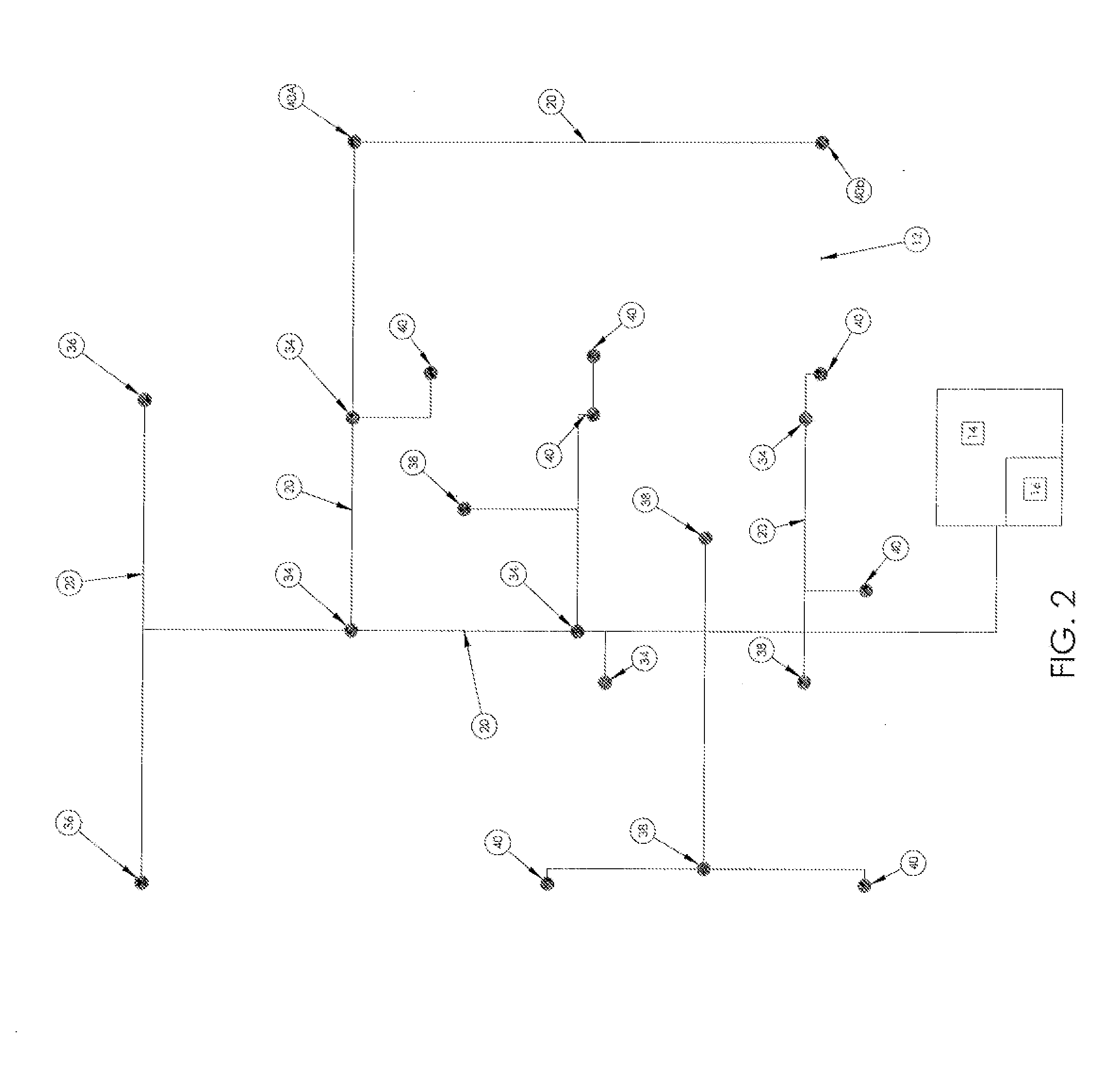Automated wildfire prevention and protection system for dwellings, buildings, structures and property
a technology for protecting systems and dwellings, applied in the field of automatic wildfire prevention and protection systems for can solve the problems of increasing the number of dwellings, buildings, structures and properties at risk, destroying the risk of wildfire to residences, and thousands of homes and other structures
- Summary
- Abstract
- Description
- Claims
- Application Information
AI Technical Summary
Benefits of technology
Problems solved by technology
Method used
Image
Examples
Embodiment Construction
[0014]An automatic wildfire prevention and protection system is disclosed that is designed to prevent structures and the immediate surrounding property areas from catching fire when a wildfire approaches and threatens the aforementioned structures and property. This fire prevention and protection system is designed for use on and with any type of structure such as residences, dwellings, out buildings, barns, commercial buildings, other such structures, and landscapes.
[0015]The system relies upon a distribution system that, when activated, very rapidly coats the exterior of the structures, decks and surrounding landscape with a fire retardant compound that remains on the surface and remains effective in suppressing combustion until deliberately washed off. The system is self-contained and substantially autonomous in operation.
[0016]The system relies upon tanks pressurized with inert gas, compressed gas, electric, gravity, or another motive source to mix the fire retardant compound wi...
PUM
 Login to View More
Login to View More Abstract
Description
Claims
Application Information
 Login to View More
Login to View More - R&D
- Intellectual Property
- Life Sciences
- Materials
- Tech Scout
- Unparalleled Data Quality
- Higher Quality Content
- 60% Fewer Hallucinations
Browse by: Latest US Patents, China's latest patents, Technical Efficacy Thesaurus, Application Domain, Technology Topic, Popular Technical Reports.
© 2025 PatSnap. All rights reserved.Legal|Privacy policy|Modern Slavery Act Transparency Statement|Sitemap|About US| Contact US: help@patsnap.com



